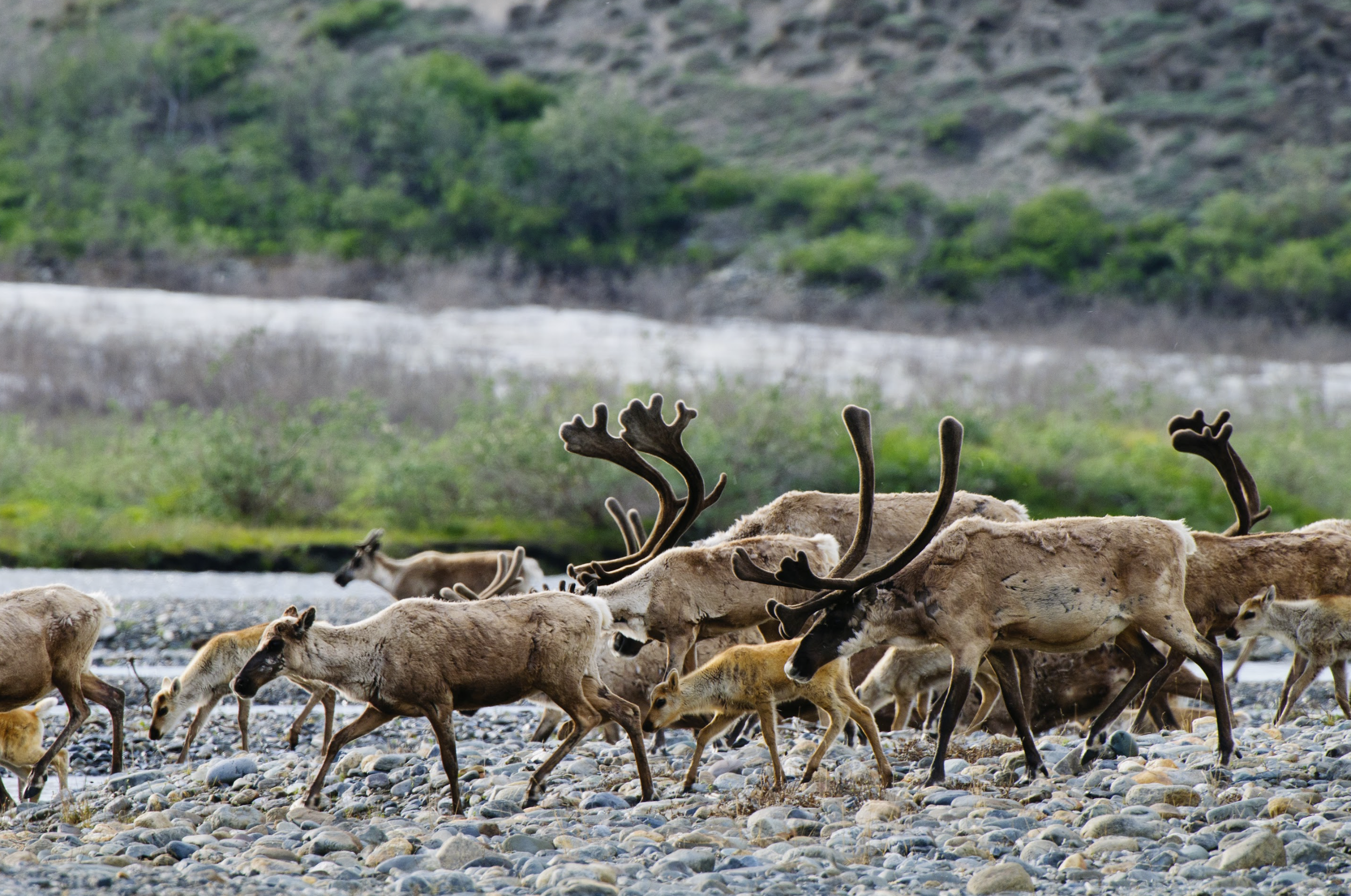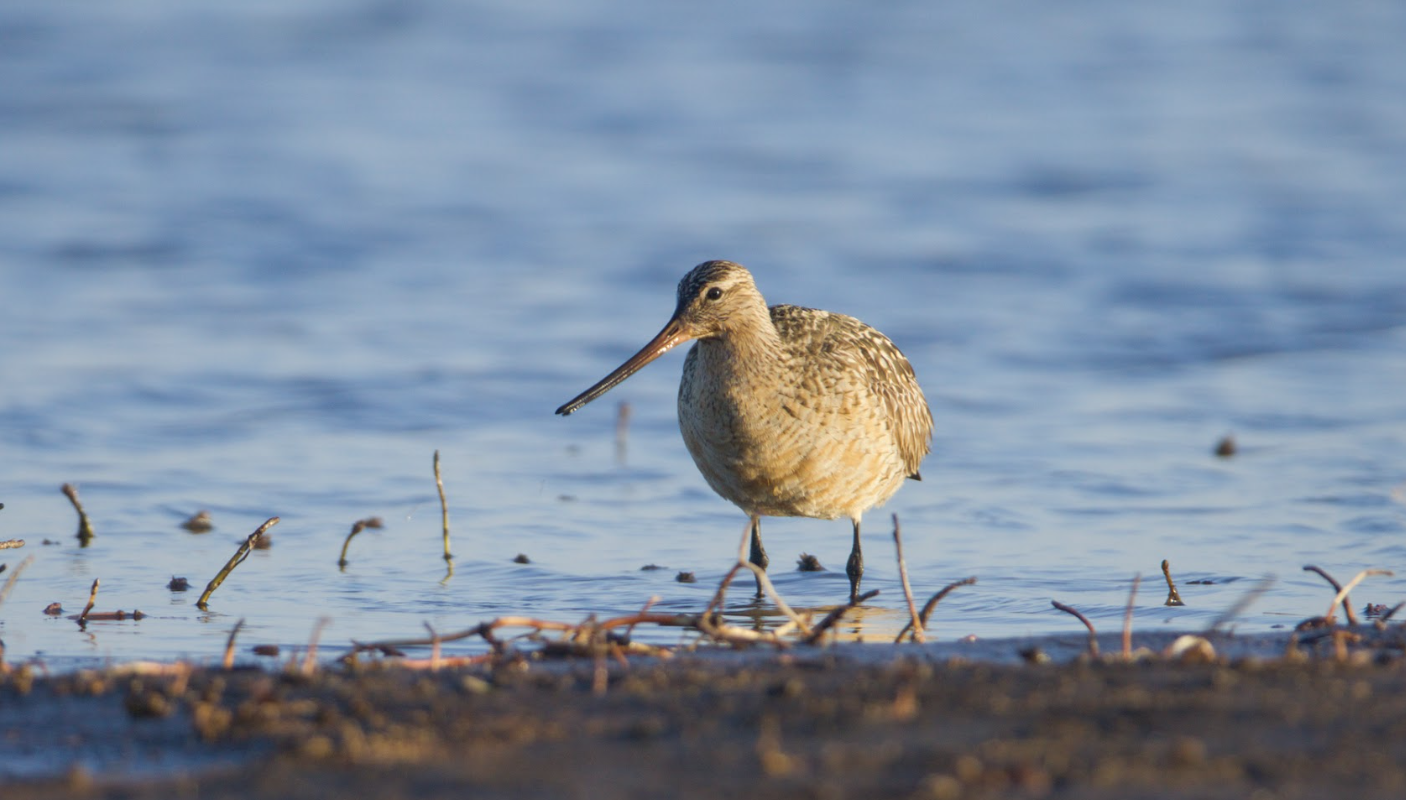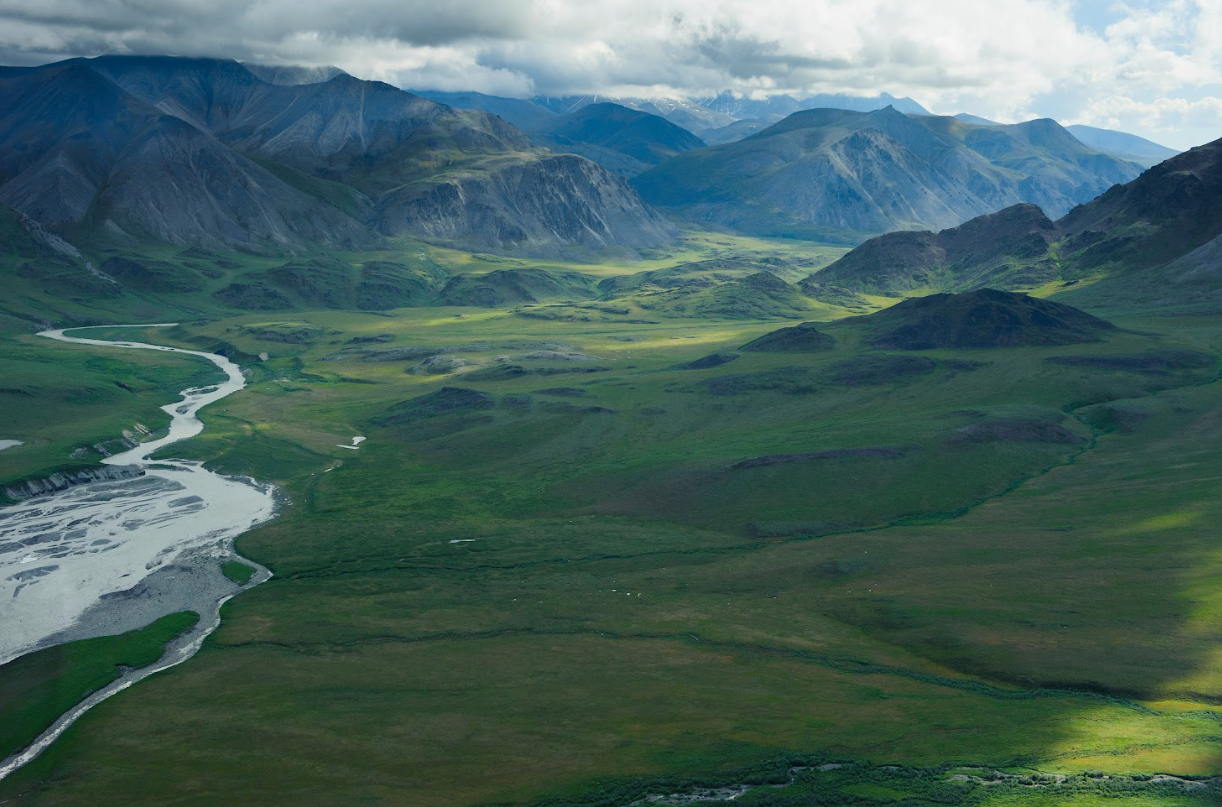
Congress Advances Trump’s Plans to Sell Off Public Lands in Western Arctic
Congressional attacks take place as the Trump Administration Advances Numerous Proposals to Sell Off Public Lands in the Arctic

Grandmothers Growing Goodness, Sovereign Iñupiat for a Living Arctic CondemnTrump’s Decision to Roll Back Protections for Western Arctic
The Trump Administration just announced a final rule rescinding the 2024 Bureau of Land Management rule that protected 13 million acres in the National Petroleum Reserve - Alaska (NPR-A). Over 300,000 people, including frontline Indigenous communities, spoke out against this decision during a public comment period. This region is home to Indigenous communities, ecologically critical landscapes like Teshekpuk Lake, wildlife, and so much more, all of which are threatened by expanding oil and gas drilling. Grandmothers Growing Goodness, Sovereign Iñupiat for a Living Arctic (SILA), and Native Movement submitted comments expressing strong opposition to any rescission or weakening of the 2024 NPR-A Rule.

Trump’s BLM Quietly Moves Forward ConocoPhillips’ Dangerous Exploration Activitiesin Western Arctic with 7 Day Comment Period
Late Monday, the Bureau of Land Management announced that it will now accept comments on a single Environmental Assessment (EA) for ConocoPhillips’ winter exploration activities, which includes drilling, seismic, and plugging wells. Comments are due November 17, with community meetings planned for after the comment period closes on November 18 in Nuiqsut and December 4 in Anaktuvuk Pass.

Alaska Native Communities Denounce Move to Sell Off Public Lands Around Teshekpuk Lake, Millions of Acres Across the Western Arctic for Oil & Gas Drilling During Government Shutdown
Earlier this week, despite the government being shut down, the Trump administration began the process to sell off roughly 16 million acres of public lands in the Western Arctic for oil and gas drilling. The Bureau of Land Management is calling for nominations on all available unleased areas for oil and gas development in the Reserve, kicking off a 30-day public comment period. Simultaneously, the Trump Administration is pursuing multiple other rollbacks to remove protections and open additional acreage in the Western Arctic to oil and gas development.

AK Congressional Delegation Takes Unprecedented Step to Dismantle Critical Protections for Teshekpuk Lake, Indigenous Communities, Wildlife In the Western Arctic
Late last week, U.S. Senator Dan Sullivan (R-AK) and U.S. Representative Nick Begich (R-AK) introduced Congressional Review Act (CRA) resolutions of disapproval targeting the 2022 National Petroleum Reserve - Alaska (NPR-A) Integrated Activity Plan (IAP). U.S. Senator Lisa Murkowski (R-AK) has also joined as a co-sponsor of Sen. Sullivan’s resolution.

Grandmothers Growing Goodness Condemns Plans to Open Up Western Arctic to Oil + Gas Development
The Trump Administration’s comment period on its proposal to roll back protections for 13 million acres in the National Petroleum Reserve - Alaska (NPR-A) officially concluded. Over 250,000 people spoke out against the Trump Administration’s plans to strip vital protections for Indigenous communities, iconic landscapes like Teshekpuk Lake, wildlife, and so much more, all to open up more of America’s Arctic for oil and gas drilling. Grandmothers Growing Goodness, Sovereign Iñupiat for a Living Arctic (SILA), and Native Movement submitted comments expressing strong opposition to any rescission or weakening of the 2024 NPR-A Rule.

Grandmothers Growing Goodness and Sovereign Iñupiat for a Living Arctic Denounce Senate Republicans’ Decision to Keep Mandated Arctic Leasing in Mega-bill
Following hours of vote-a-rama on amendments, Senate Republicans passed their version of the budget reconciliation bill 51-50, with Vice President J.D. Vance casting the tiebreaking vote. Despite widespread opposition, the final Senate bill includes mandated oil and gas lease sales across the Arctic, including in the National Petroleum Reserve - Alaska (Western Arctic).

Grandmothers Growing Goodness, Sovereign Iñupiat for a Living Arctic Oppose Trump Administration’s Proposal to Sell Off 82% of the Western Arctic for Oil and Gas Drilling
On Tuesday night, the Trump Administration’s Department of the Interior (DOI) released a proposal that would sell off 82% of the Western Arctic to the oil and gas industry. DOI will have only a two-week comment period for the public to weigh in on a proposal that could open almost 19 million acres of public lands to drilling.

Grandmothers Growing Goodness, Sovereign Inupiat for a Living Arctic Respond to Trump Proposing to Strike Down Protections for Western Arctic, Starting 60-Day Comment Period on Proposal
Today, the Trump administration took steps to strike down critical protections for 13 million acres in the National Petroleum Reserve - Alaska (Western Arctic Reserve), opening a 60-day comment period on its proposal.

Grandmothers Growing Goodness Celebrates Removal of Western Arctic Mandated Leasing From Budget Rec Bill
Early Wednesday morning, the U.S. House of Representatives approved the latest version of Republicans’ budget reconciliation bill, ultimately axing sections that would have mandated oil and gas leasing in the National Petroleum Reserve-Alaska (Western Arctic).

Grandmothers Growing Goodness Responds to House Republicans Mandating Oil and Gas Lease Sales in Western Arctic
Today, the Trump administration took another step towards repealing protections for 13 million acres in the Western Arctic. These safeguards were finalized last year to protect the food security, cultural traditions, and health of communities on the North Slope from expanded oil and gas development. They were developed alongside robust input from scientists and wildlife experts, Indigenous communities who live in harmony with these lands and the wildlife they support, and supportive comments from more than two hundred thousand people across the country.

Grandmothers Growing Goodness, Sovereign Inupiat for a Living Arctic Denounce The Trump Administration’s Next Step to Repeal Protections for Indigenous Communities, Wildlife, and Lands
Today, the Trump administration took another step towards repealing protections for 13 million acres in the Western Arctic. These safeguards were finalized last year to protect the food security, cultural traditions, and health of communities on the North Slope from expanded oil and gas development. They were developed alongside robust input from scientists and wildlife experts, Indigenous communities who live in harmony with these lands and the wildlife they support, and supportive comments from more than two hundred thousand people across the country.

Grandmothers Growing Goodness Condemns DOI’s Plans to Open Western Arctic for Drilling
Yesterday, Secretary Doug Burgum announced plans to open up an additional six million acres in the Western Arctic (National Petroleum Reserve- Alaska) to oil and gas leasing – a plan that, if successful, will result in the devastating elimination of protections for subsistence and wildlife in the region.
Last year, Nuiqsut Trilateral Incorporation, a non-profit organization representing Kuukpik, the Native Village, and the City of Nuiqsut, negotiated a right of way (ROW) protecting the core caribou calving habitat area of Teshekpuk Lake. It is unclear whether the Secretary still intends to honor that agreement.

Grandmothers Growing Goodness Condemns Trump’s Day One Executive Order Threatening Communities, Wildlife, and Health in the Western Arctic
Yesterday, President Trump announced an executive order that directs the Secretary of Interior to roll back protections for Special Areas in the Western Arctic and turn back the clock four years to reinstate plans to drill in the Teshekpuk Lake Special Area. This move is dangerous and undermines the Biden Administration’s years of engaging with Tribes and building a sound scientific record that underscored the necessity of protecting special areas, wildlife, and Native Alaskans in the Western Arctic.

Alaska Native Communities Celebrate New Protections for Teshekpuk Caribou Herd, Tribes in the Western Arctic
(Nuiqsut, Alaska) – Today, Alaska Native communities are welcoming new measures to protect their subsistence, cultural, and traditional activities. In an announcement today, the U.S. Department of the Interior (DOI)’s recognized significant subsistence resource values, the need for co-management, and the importance of establishing new Special Areas to protect subsistence use in the Western Arctic.

Alaska Native Communities Ask BLM to Designate a New Nuiqsut Subsistence Use Special Area
(Nuiqsut, Alaska) – Today, the Biden Administration concluded its Request for Information on Special Areas in Alaska’s Western Arctic, in which it solicited public input on how to update protections in existing Special Areas, expand existing Special Areas, and create new Special Areas. As a part of this process, Grandmothers Growing Goodness, Sovereign Iñupiat for a Living Arctic (SILA), and Native Movement submitted joint comments to the Bureau of Land Management (BLM) to designate a new Nuiqsut Subsistence Use Special Area, which would include an area that Native Alaskans rely on most for all of their subsistence uses, among other asks.

Alaska Native Organizations Welcome New Opportunity to Protect Lands and Communities in the Western Arctic
Alaska Native Organizations Welcome New Opportunity to Protect Lands and Communities in the Western Arctic.

Grandmothers Growing Goodness Launches New TV, Digital Ad Campaign Thanking Biden For Strengthening Protections for America’s Arctic
Today, Grandmothers Growing Goodness launched a new TV and digital ad campaign thanking the Biden administration for announcing unprecedented safeguards to strengthen protections for lands and Alaska Native communities in Alaska’s Western Arctic.

Alaska Native Communities Applaud Unprecedented Safeguards to Protect Lands and Communities from Oil and Gas Development
The Biden Administration just took historic action to protect the National Petroleum Reserve-Alaska (NPR-A) with a new rule to ensure any resource development in the Arctic is balanced with protections for Alaska Native communities and the lands and wildlife that shape our lives.

